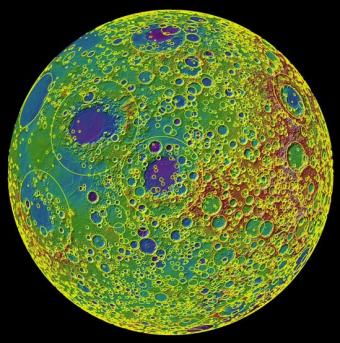James W. Head, the Louis and Elizabeth Scherck
Distinguished Professor of Geological Sciences, was part of a research team
that has shown that the Moon had a surprisingly strong magnetic field 3.56 billion years ago. Samples of that age recovered during the Apollo 11 mission
showed signs of having been magnetized by a stable field, the new research
found. That suggests that the field persisted for at least 160 million years
longer than researchers had previously thought. The new finding enables
scientists to rule out one possible source for the field. It was thought that
giant impacts might have caused molten material in the Moon’s interior to
oscillate, creating a dynamo that in turn would generate a magnetic field.
However, this work shows that the Moon’s field persisted for millions of years
after a rash of giant impacts 3.7 million years ago, making those impacts an
unlikely source. “The Moon was closer to the Earth in its earlier history” says
Jim Head, “and the influence of the Earth’s gravitational pull on the lunar
interior may have been a factor in the field lasting for so long.“ The findings
are published in the
Proceedings
of the National Academy of Sciences.

